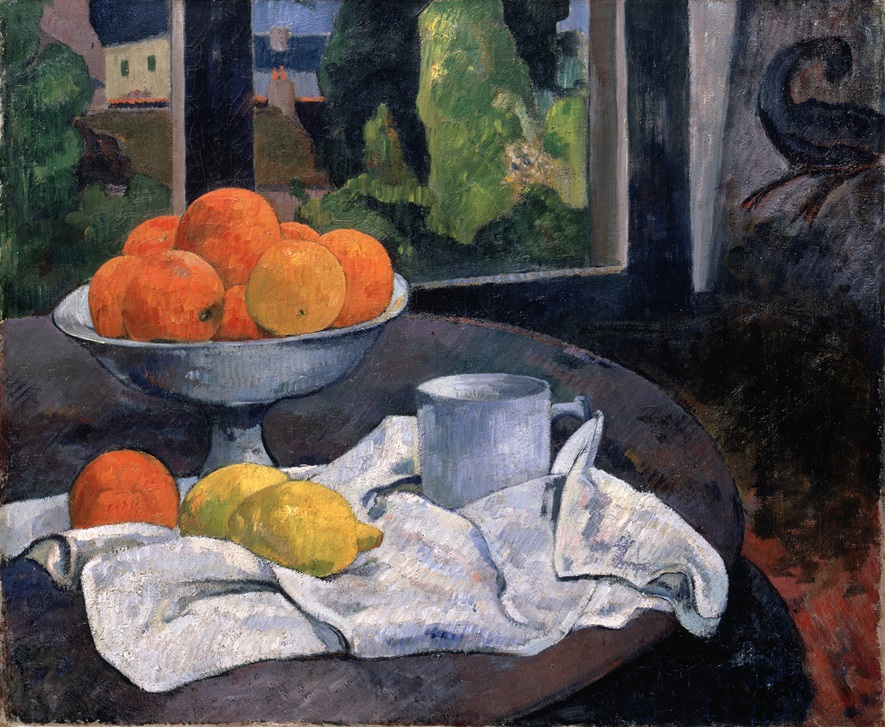
A swan, a goose, or a ghost? What kind of being has become entangled in the veil of the curtain, right at the edge of the picture, but at the same time pointedly juxtaposed with the proudly glowing active elements — the oranges and lemons? What movement is this silhouette of an animal making? Is it turning its long neck a perilous 180 degrees —to bring its head around itself and form a loop? Even though there is plenty of evidence that it is a goose, a popular motif in Breton folk art—at the time that he painted this picture Gauguin was living at Le Pouldu in Brittany—this mysterious animal gives the still life a certain quality that demands thought. A banal and everyday animal becomes the secret antihero of a picture that, at first glance, appears to be acquainted only with radiant victors: the oranges compete in their radiance, strikingly reinforced by the complimentary contrast of the table’s violet surface and adroitly varied by the two lemons that glow with an equal intensity, offering a sour taste experience to set against the sweet. These are fruits of the south, in chilly Brittany in the northwest of France. At the time, this exotic quality must have been an incomparably more powerful experience than it is today, when every fruit in the world is obtainable at any time of the day all the year across Western (and, increasingly, Eastern) civilization.
It is not by chance that the fruits herald a happier, more authentic life in the South Seas, something that Gauguin longed for in the year in which he painted the picture. In late 1888, he followed Van Gogh to Arles, and to the Mediterranean light of the south of France. However, the friendship between the two painters swiftly broke down into an existential conflict, which resulted in Van Gogh cutting off his own ear. Gauguin hastily returned to the north of France, and worked in Brittany once again, before setting off for the supposed paradise on Earth of Tahiti in April 1891. To his great disappointment, however, he witnessed poverty, sickness, and oppression by the ruling white class there. Thus, this fruit still life picture at the Langmatt was created in tumultuous times, and yet it betrays none of these existential tensions. Gauguin concentrates entirely on his artistic concerns, as if he had pressed a button and switched off his tempestuous life. He had taken a similar still life picture by Paul Cézanne with him to Brittany, following in the footsteps of his revered fellow artist with a battle cry of “Let us make a Cézanne!” There are in fact certain similarities in the composition —in the position and structure of the white cloth, for instance — and yet Gauguin’s picture differs significantly from Cézanne’s in the striking surface qualities of the fruits inside, and in the trees, bushes, and roofs outside. This conscious turning away from external reality, the glowing of the colors, and the abstract tendencies also characterize the pictures later painted by Gauguin in the South Seas, seeking to tell of a paradise under every circumstance, even if an inescapable melancholy overlies their motifs. The swan-like goose may represent a faint foreshadowing of this.
Markus Stegmann in: «Herzkammer», Museum Langmatt 2020